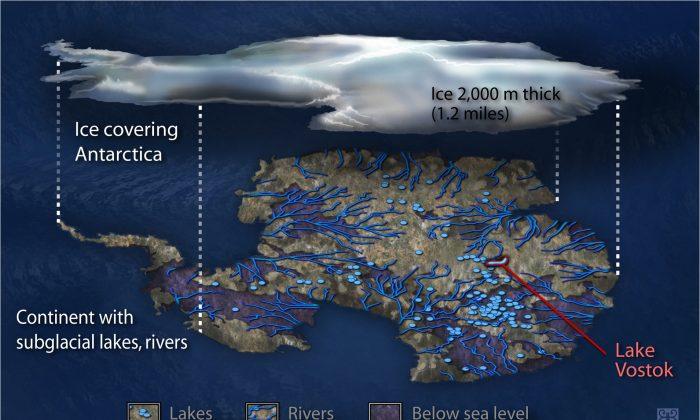Millions of years ago, Antarctica had a tropical climate and was warm as California and Florida. Today, it is almost entirely covered by layers of thick ice, but a separate environment still remains underneath.
Using airborne radar and satellite technology, scientists have mapped a series of lakes and rivers that form a wetland-like area beneath the ice, whose structure still influences the flow of water from Antarctica, and indirectly the rise (and fall) of the sea-level.
In 2013, scientists drilled through the ice to examine sediments and other materials in Lake Whillans that have been trapped under 2,600 feet of ice for thousands of years.
The water in Lake Whillans comes primarily from melted ice, but the lake also has seawater from ancient marine sediments found on the bed of the lake. The lake-water periodically drains into the ocean, but isn’t strong enough to carry all the sediments.
“It is amazing to think that we did not know that this lake even existed until a decade ago. It is exciting to see such a rich dataset from the lake, and these new data are helping us understand how lakes function as part of the ice-sheet system,” said Helen Amanda Fricker, a researcher in the exploration project and the person who discovered Lake Whillans from satellite data in 2007.
The small pockets of seawater influence the biogeochemistry of Antarctica, and understanding the dynamic of the subglacial terrain can allow scientists to make better predictions about the long-term changes that the ice sheets will experience.
These studies are just the beginning, as there are an estimated 400 lakes underneath the Antarctic glaciers.






Friends Read Free